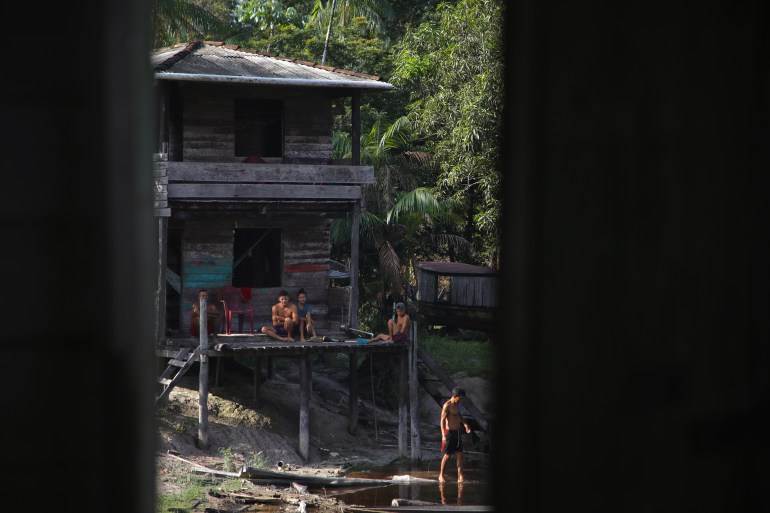curalinho, brazil For communities on the Brazilian island of Malaje, the ebb and flow of the Canaticu River marks the change of seasons.
During the rainy season, the river is several meters deep, lapping against the wooden houses on stilts along the shore. Residents rely on its water for drinking, cooking and laundry.
But when summer comes, the river dwindles to a creek. Nonetheless, its traffic is usually sufficient to meet the daily needs of locals.
This year, however, a severe drought has swept across large swaths of the Brazilian Amazon rainforest. In some areas, the Kanaticu River is reduced to a dark brown trickle, filled with bacteria, and has dried up almost completely.
Now we can’t do anything with it. Elizete Lima Nascimento, 36, said it wasn’t like this before. She has lived in Serafina, one of the riverside communities, for the past ten years.
The dry climate is causing a crisis in towns like Serafina that could change the way they live for generations to come.
Hundreds of thousands of people depend on Amazon rivers and streams for food, transportation and income.
But historically low water levels are forcing residents to rethink their relationship with the environment. Water levels in one of its tributaries, the Rio Negro, plummeted to levels not seen in 121 years.
“We are completely dependent on nature,” Maria Vanessa Tavares de Souza, a 36-year-old teacher living in Serafina, told a community meeting to discuss problems caused by the drought.
Now that climate change has thrown everything off balance, it will be difficult for us to survive here.
One of the residents’ main food sources: fish, is already under threat. As the river receded, some fish were stranded, and in the remaining water, carcasses of other fish floated to the surface.
Unusually warm temperatures are suspected to be responsible for the mass deaths. Residents worry that the dead fish will contaminate water sources after rotting.
Brazil has suffered nine heat waves since the start of the year, with Rio de Janeiro’s heat index soaring to nearly 60 degrees Celsius (140 degrees Fahrenheit) in November. Globally, 2023 is expected to be the hottest year on record.
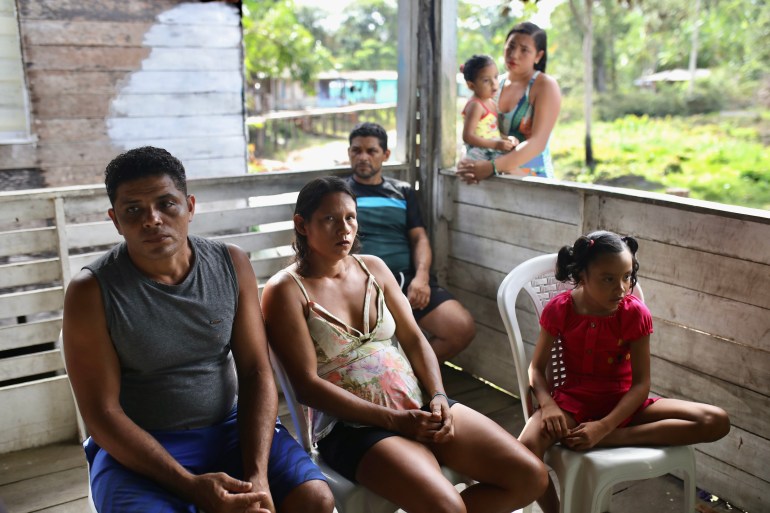
Scientists blame rising temperatures and extreme weather conditions on climate change caused by the burning of fossil fuels.
This year’s El Niño climate phenomenon has caused particularly strong warming of surface water in the equatorial Pacific, leading to drought in the Amazon.
But the trend toward dry weather has been around for a long time. A string of harsh summers has led many Serafina residents to dig wells in their backyards to get groundwater instead of relying on rivers.
Others have called for the installation of a drinking water distribution system, a massive infrastructure project consisting of pipelines and storage facilities. They view the wells as unreliable and not a long-term solution.
Still, well owners like Nascimento say their home-made water systems are crucial to surviving the drought.
Wells are extremely important. “We use its water for everything, drinking, cooking, making water, washing ourselves and our clothes,” she said, lifting a wooden board in the garden to reveal the six-meter-deep hole.
However, not every home has a well, so residents who have one share the water supply with their neighbors. Paula Lima, 43, brings home more than 50 liters (13 gallons) of water every day from a well at her cousin’s house on the other side of the community just to meet her family’s needs.
Those trips led to Lima’s back problems. But she had no choice. Drinking river water when water levels are so low can cause vomiting and diarrhea, or worse.
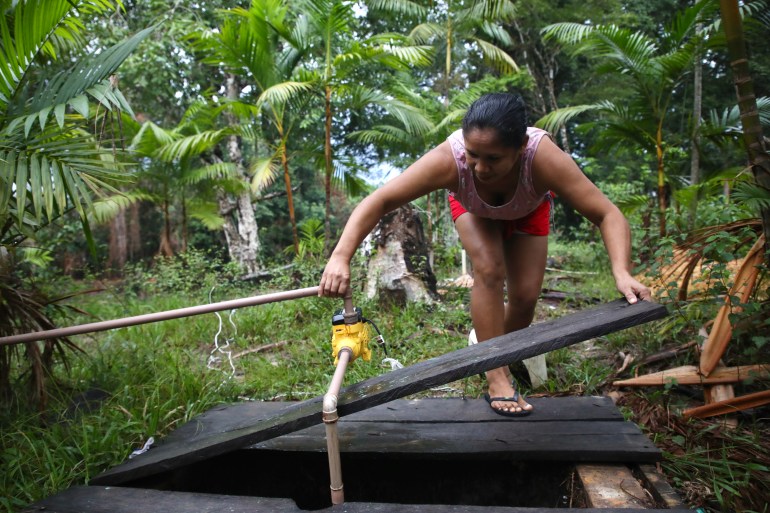
Eleniuda Costa Paiva de Souza, a 30-year-old nurse, recently had to take her two-year-old daughter to the nearest hospital, a trip that required hiking through the jungle and then a five-hour boat ride. Her children became sick from ingesting sludge from the river.
DeSouza said she plans to leave the community soon. Life here only gets worse. She explained that things would be easier in the city.
Isolation is part of life in river communities: Serafina embraces its meandering bends and sees rainforest as far as the eye can see. But the weak current of the Canaticu River makes Serafina seem even more secluded.
To stock up on supplies, locals often use rivers to travel to nearby towns. But because the water is so shallow, residents are forced to maneuver their small wooden boats at a snail’s pace to avoid logs and exposed tree roots.
Many people worry that in the event of a medical emergency, it will take a long time to reach the nearest town.
The city of Curralinho, located downstream on the Canaticu River, is facing its own difficulties amid severe drought conditions.
The town, located on the southern coast of Maraj, and its nearly 34,000 residents watched thousands of hectares of nearby rainforest burn in November.
Curalinho wasn’t the only one battling the raging fire. In the first two weeks of October, more than 2,900 fires broke out in Amazonas state, a record high.
The smoke was so thick that it choked the region’s largest city, Manaus, complicating navigation and the delivery of essential supplies.
Criminal enterprises have also taken advantage of dry conditions to set fire to rainforest as part of land-grabbing schemes.
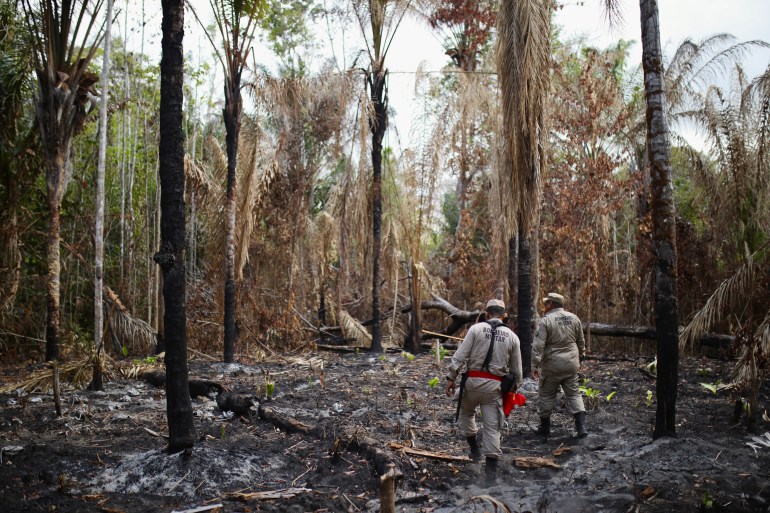
But in Curalinho, small-scale farmers are largely responsible for the fires. They use fire as a crop management tool, removing residue from previous years’ harvests and neutralizing soil acidity.
However, dry weather caused some fires to get out of control.
The town declared a state of emergency back in September, warning of increased fire risks during the drought.
Precipitation in the Amazon has been below average for at least six months. One long-term cause is deforestation: rainforests absorb and release water, helping to create rainfall cycles. But without dense trees, humidity drops, which means less rainfall.
Ten to fifteen years ago these fires were not a problem. Esaquier Pereira of the Curalinhos environment department said the forest used to be wetter, which meant the flames did not spread.
Machinery that prepares soil for planting could stop farmers starting fires. But the equipment costs about $25,000, Pereira added.
For farmers like 65-year-old Maria Terezina Ferreira Sampaio, such expenses are out of the question.
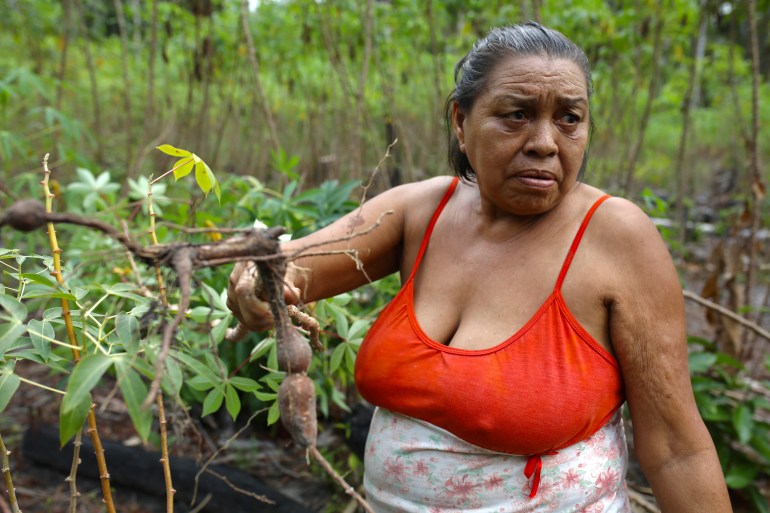
Sampaio lives with her husband in a bare wooden house on the outskirts of Curalinho, where she bought her five children. The couple relies on selling their crops to supplement their pension, allowing them to buy food, medicine and clothing.
This year, drought destroyed their orange, coconut, lemon and banana trees and prevented their cassava plants from growing to edible size.
I kept crying and crying. After so many sacrifices, Sampaios’s words trailed off as she looked despairingly at the parched earth, dry leaves crackling beneath her feet.
Curalinhos Environment Minister Esmael Lopez said that despite their best efforts, hundreds of people had their crops destroyed due to a lack of rainfall.
Regionally, the worst of the drought may still be ahead, as El Niño conditions tend to intensify in December before tapering off in April or May.
In Curalinho, heavy rains this month have lifted spirits and raised hopes of an escape from drought. But even now that wet weather arrives, it’s too late, Sampaio said.
We should have started harvesting already. Instead, everything died, she said.
#dead #record #drought #wreaking #havoc #Amazon
Image Source : www.aljazeera.com
